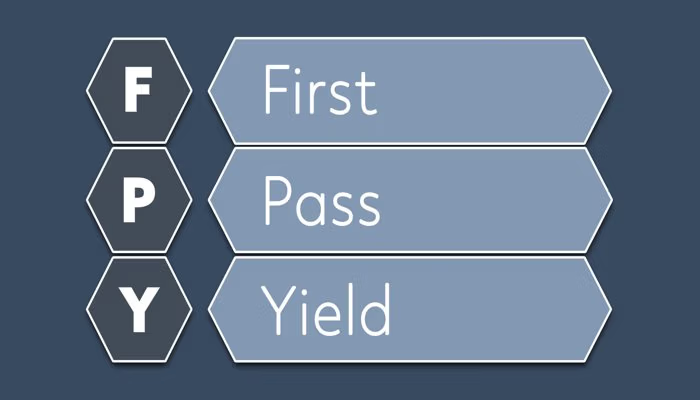Summary: Guidance documents are essential, in fields offering instructions for employees to carry out specific tasks accurately and effectively. Whether you’re outlining a manufacturing process detailing a construction workflow or Work Instruction Templates can greatly boost productivity and consistency. In this manual, we’ll explore the advantages of using templates for guidance documents, provide tips on crafting instructions, and guide you toward where you can find templates for free.
Overview of Guidance Document Templates
Templates for guidance documents are resources that help streamline the creation of instructions necessary for various organizational tasks. These templates offer a layout with sections designed to capture details such as process steps, equipment requirements, safety procedures, and quality control measures. When creating guidelines for your tasks, it’s important to consider using templates that cater to the requirements. General work instruction templates are versatile and can be used for a range of procedures. Visual work instruction templates for tasks that need clarity include images, diagrams, or videos to help with understanding.
Benefits of Using Work Instruction Templates
Developing work instructions is crucial for enhancing business efficiency and maintaining consistent quality across all functions. Employing a crafted work instruction template comes with advantages, improving work processes and making it easier for new employees to start smoothly.
1. Streamlining Work Processes
Use our thorough work instruction template to streamline your production, assembly or construction processes. This template offers step-by-step guidance so that every team member can carry out tasks efficiently and consistently.
2. Ensuring Consistency and Standardization
Our work instruction template promotes consistency within teams and departments by encouraging practices. By following the instructions in the template, all employees can perform tasks in a manner that leads to consistent outcomes.
3. Enhancing Training and Onboarding Procedures
Our user-friendly work instruction template serves as a tool for training hires. It provides a framework that facilitates the learning of essential tasks and procedures. With guidance and aids, new hires can easily grasp the procedures, improving their onboarding experience.
4. Craft the Ideal Work Plan
Our customizable work instruction template lets you devise a tailored work plan to suit your requirements. Collaborate with subject matter experts to incorporate instructions and technical terms, ensuring the document is clear and understandable.
5. Boost Business Effectiveness
Utilizing our work instruction template ensures that each process step is clearly documented and easy to follow. This does not save time and also enhances overall business efficiency. Integrate flowcharts and checklists to ensure efficient operations.
6. Integrate Visual Aids and Flow Charts
Our template offers the option to include aids, like flowcharts simplifying complex processes for better understanding. Visual representations enhance comprehension and facilitate learning for employees.
7. Guidelines for Crafting Work Instructions
When using our template, consider the objective of each work instruction. Be sure to provide a brief overview of the process. Utilize instructions. Create visual representations of the workflow using flowcharts or Gantt charts. Keep the document editable to implement updates as processes develop easily.
How well are standardized instructions integrated into your workflows?
Work Instruction Software provides a structured approach to documentation and execution.
Tips on Drafting Work Instructions
Drafting work instructions necessitates meticulous planning and meticulous attention to detail. Here are some suggestions to assist you in creating user-friendly instructions. To craft work instructions, planning meticulously and paying close attention to detail is crucial. Use the advice to develop clear and user-friendly instructions for your team;
1. Understand Your Audience
Identify the target audience for your work instructions. Tailor the language and level of detail to suit their varying levels of expertise. Aim for a balance between simplicity and thoroughness especially if your audience includes individuals with experience levels.
2. Use Clear Language
Use concise language without jargon or complex terms. Choose wording that all team members can understand.
3. Simplify Complex Processes
When documenting tasks, break them down into to follow steps. By breaking down processes into parts, you enhance understanding and reduce the chances of errors or confusion.
4. Include Visual Aids
Improve the clarity of your work instructions by incorporating aids such as images, diagrams, or instructional videos. These visuals help illustrate points, demonstrate equipment usage, and clarify specific techniques.
5. Tap into Expertise
Collaborate with subject matter experts who have experience with the task or process in question. Their knowledge and skills will ensure the accuracy and completeness of your instructions.
Creating Work Instruction Templates with Microsoft Word
Microsoft Word, a used software, offers tools for designing and customizing work instruction templates. Below is a guide to help you create a work instruction template using MS Word;
1. Open a document
Start by launching Microsoft Word and opening a document.
2. Customize the document
Adjust the page layout, margins, and orientation per your preference and the content you wish to include.
3. Craft a title
Choose a title for your work instruction template to help users quickly grasp its purpose.
4. Structure with headings
Utilize heading styles like Heading 1, 2, etc., to organize your content effectively.
5. Introduce the document
Provide an overview of the task or process in your work instructions to set the context.
6. Detail step-by-step instructions
Break down the process into steps with numbered lists and bullet points for clarity.
7. Enhance with visuals
Incorporate images or diagrams to explain steps or complex instructions within your template visually.
Ensure the visuals are easy to understand and directly related to the content.
Include safety guidelines. If the task involves any safety concerns, provide instructions and precautions to ensure the well-being of employees.
Incorporate sections
Depending on how intricate the task is, consider including additional sections such as equipment needs, quality checks, or troubleshooting advice.
Structure the document
Maintain a format throughout the document by using font styles, sizes, and colors. Ensure that the text is easily readable and visually attractive.
Review and edit
Before finalizing your work instruction template, carefully review the content for mistakes, inconsistencies, or unclear directions. Make necessary revisions to enhance clarity and precision.
Where to Get Free Work Instruction Templates
Obtaining free work instruction templates has become simpler with platforms and resources available. Below are some sources where you can access free work instruction templates;
Microsoft Office Templates
The official Microsoft Office website provides a selection of templates for different industries and purposes, including work instructions. Explore their range of templates to find one that best fits your requirements.
Smartsheet
A work management platform that also provides free work instruction templates. Their templates are highly customizable. It can be accessed and edited online.
Process Street
A tool, for workflow automation that offers a variety of free work instruction templates. These templates are created to streamline processes and ensure consistency in task execution;
Various industry-specific websites and forums
For instance, individuals working in the manufacturing sector can explore manufacturing-focused websites or forums for templates. When utilizing free work instruction templates, tailor them to meet your needs and requirements. Add content to align with your organization’s processes, safety protocols, and industry standards.
Customizing Work Instruction Templates
While free work instruction templates serve as a starting point, it’s crucial to customize them according to your organization’s requirements. Here are some suggestions for personalizing work instruction templates;
1. Familiarize yourself with the template
Take the time to go through the template you’ve selected thoroughly. Understand its layout, sections, and the details it contains. This will assist you in pinpointing areas that require customization.
2. Adjust the content
Customize the instructions to suit your company’s procedures and needs. Remove any outdated information. Incorporate specific details that are crucial for your tasks or processes.
3. Incorporate industry guidelines
If your field has regulations, standards, or best practices, ensure to integrate them into the template. This guarantees that your work instructions adhere to industry norms and expectations.
4. Include safety measures
Safety is a component of work instructions. Integrate pertinent safety instructions, precautions and any required Personal Protective Equipment (PPE) specifications to your tasks or processes.
5. Update Diagrams
If there are visuals or diagrams, in the template ensure they accurately depict your equipment, tools or processes. Adjust them as necessary to reflect your setup.
6. Consider design and branding elements
Customize the design and appearance of the template to match your company’s branding guidelines.
This covers types, colors, headings, and footnotes
Testing and validation: Before finalizing the customized layout, it’s advisable to test it yourself or have colleagues from your organization review it. This step helps spot any gaps or areas needing clarification. Remember that customization aims to tailor the work instruction template to suit your organization’s needs effectively. Adjust the template according to your tasks, workflows, and industry standards for usability and clarity.
Understanding the Purpose and Elements of a Work Instruction
It’s crucial to grasp their purpose and incorporate components to craft work instructions. Here are the fundamental elements of a work instruction;
Title
The title should indicate the task or process explained in the work instruction. It should be concise yet descriptive.
Scope
Commence with an overview of the objective and scope of the task or process. Clearly define what the instruction intends to accomplish and its target audience.
Materials and tools
Enumerate all materials, tools, equipment, or software needed for the task or process.
The Purpose and Components of a Work Instruction
Include details, like model numbers, quantities, or specifications. Here is the revised text;
1. Provide step-by-step instructions
Divide the task or process into sequential steps using lists or bullet points for a logical presentation.
2. Incorporate Diagrams
Use images, diagrams, or visual aids to enhance understanding by illustrating points, demonstrating proper techniques, or highlighting critical areas.
3. Include safety requirements and precautions
Communicate safety instructions, precautions, necessary safety equipment, and protocols while clearly outlining hazards and ways to mitigate them.
4. Implement quality checks and measurements
If applicable, include quality checks, inspections, or measurements instructions to ensure the task or process meets the required standards.
5. Offer troubleshooting and problem-solving guidance
Provide tips on handling issues or challenges that may arise during the task or process, along with troubleshooting solutions.
6. Refer to resources
Include references to documents, manuals, and websites that offer information or support for the task or process.
7. Include approval and revision history sections
If needed by your organization, add areas for approval signatures and revision history to track changes made to the work instruction over time.
Clear, accurate, and repeatable work instructions form the basis of standard work by ensuring every task is performed in the best known way.
FAQ | Work Instruction Templates
What’s the difference between a work instruction and an SOP?
When you compare SOP vs work instruction, the key difference lies in scope and detail. An SOP explains the overall process, what needs to be done, why it matters, and who is responsible. A work instruction breaks down a single task step by step, focusing on how to perform it correctly and safely.
What is a work instruction template?
A work instruction template is a pre-designed document that provides a framework for creating standardized instructions for performing specific tasks or processes within an organization. It serves as a starting point and can be customized to fit the organization’s specific needs.
Why are work instruction templates important?
Work instruction templates are important because they promote consistency, efficiency, and accuracy in task execution. They provide a structured approach to documenting and communicating instructions, ensuring that employees have clear guidance on how to perform their tasks or processes.
Can I use a generic work instruction template for any task or process?
While a generic work instruction template can provide a good starting point, it’s generally recommended to customize the template to match the specific needs of your organization, task, or process. This ensures that the instructions are relevant, accurate, and aligned with your organization’s standards and requirements.
What should I include in a work instruction?
A work instruction should include a clear title, purpose and scope, materials and equipment required, step-by-step instructions, visuals or diagrams, safety requirements, quality checks, troubleshooting guidance, references, and approval and revision history if necessary. These components provide comprehensive guidance for employees to successfully complete the task or process.
How can I ensure clarity and user-friendliness in my work instructions?
To ensure clarity and user-friendliness in your work instructions, organize the instructions logically, use headings, bullet points, and numbering, format the document for readability, use concise and clear language, provide context and explanations where necessary, include visual aids, test the instructions with unfamiliar users, seek feedback, and regularly review and update the instructions as needed.
How often should work instructions be reviewed and updated?
Work instructions should be reviewed and updated regularly to ensure they remain accurate and up to date. Anytime there are changes in processes, equipment, regulations, or best practices, it’s important to review and update the work instructions accordingly. Regular audits or feedback from employees can also help identify areas that may require revision or improvement.
Image: Adobe Stock – Copyright: © auremar – stock.adobe.com





